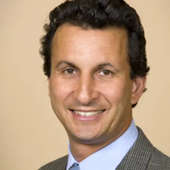Transforming Vascular Care: Dr. Michael Lebow’s Minimally Invasive Solutions
Transforming Vascular Care: Dr. Michael Lebow’s Minimally Invasive Solutions
Blog Article

General conditions may severely impact a person's freedom and overall quality of life. Nevertheless, improvements in medical engineering are transforming just how these problems are treated. Dr Michael Lebow, a well-known general physician, is at the lead of this change, pioneering minimally unpleasant methods that improve patient outcomes while lowering complications. His method is setting new standards in general surgery, providing patients with safer and more effective treatment options.
The Shift Towards Minimally Unpleasant Vascular Surgery
Traditional vascular surgery frequently expected big incisions, considerable healing intervals, and substantial risks. Dr. Lebow has embraced an alternative approach—using minimally invasive procedures that include little incisions, catheters, and advanced imaging engineering to properly target vascular obstructions and abnormalities. These strategies not merely improve individual ease but also somewhat reduce hospital remains and healing time.
Techniques such as for example angioplasty, stenting, and endovenous laser light treatments are increasingly being applied to restore body flow with minimal disruption to the body. Dr. Lebow's knowledge in these techniques has led to a greater success rate in managing conditions like peripheral artery illness (PAD) and serious venous insufficiency (CVI).
Stopping Amputations Through Early Intervention
One of the most substantial benefits of Dr. Lebow's approach is their position in avoiding amputations. Several patients experiencing important limb ischemia (CLI) face the risk of dropping a leg if their situation advances untreated. By utilizing sophisticated diagnostic methods and minimally invasive practices, Dr. Lebow can recover circulation before severe injury happens, giving people to be able to heal and regain mobility.
His work has stored countless individuals from the life-altering influence of amputation, reinforcing the significance of early intervention and state-of-the-art general care.
Technology-Driven Detail in General Techniques
Dr. Lebow incorporates the newest medical technology in to his training, ensuring that his people obtain the most precise and effective treatment. High-resolution imaging, laser therapy, and catheter-based interventions allow him to steer even the most complicated vascular problems with higher accuracy. These inventions end up in paid down troubles, quicker healing, and increased long-term outcomes.
Moreover, minimally intrusive procedures are associated with lower illness dangers and less post-operative pain, making them a preferred selection for several general patients.
Patient-Centered Treatment and Long-Term Achievement
Beyond his medical experience, Dr. Lebow is focused on giving customized, patient-centered care. He performs closely with every person to produce designed treatment options, inform them on general wellness, and help them during their recovery. His compassionate strategy fosters confidence and guarantees that individuals sense comfortable in their healthcare journey.
By combining sophisticated practices with a focus on individual well-being, Dr. Lebow is transforming the landscape of general surgery. His commitment to creativity and excellence remains to make a lasting affect the field, providing individuals a journey to raised health and increased quality of life.
Conclusion
Dr Michael Lebow's breakthroughs in minimally unpleasant vascular surgery are revolutionizing the way general disorders are treated. Through cutting-edge methods, early treatment, and a patient-first method, he is increasing outcomes and stopping significant complications. His function is not only evolving medical research but additionally adjusting lives by providing safer, more efficient options for vascular health.
Report this page